Clothes moths is a frustrating bug, trust me! You can see them, but they keep eating your favorite clothes little by little.
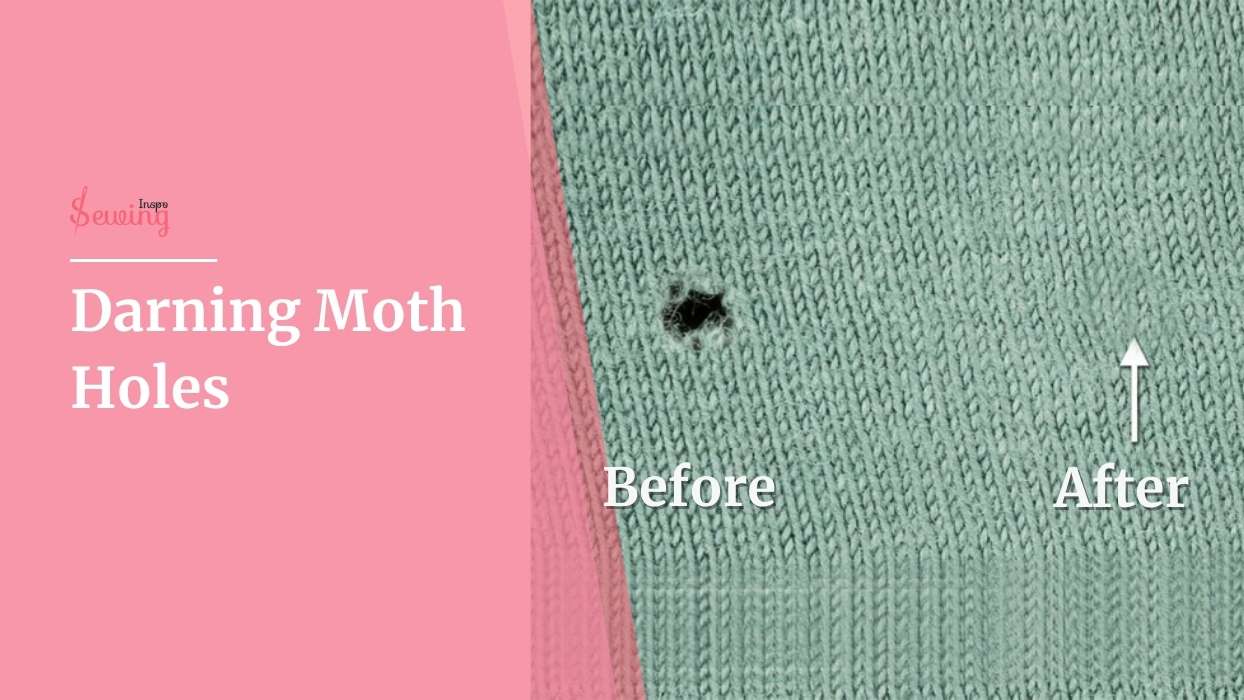
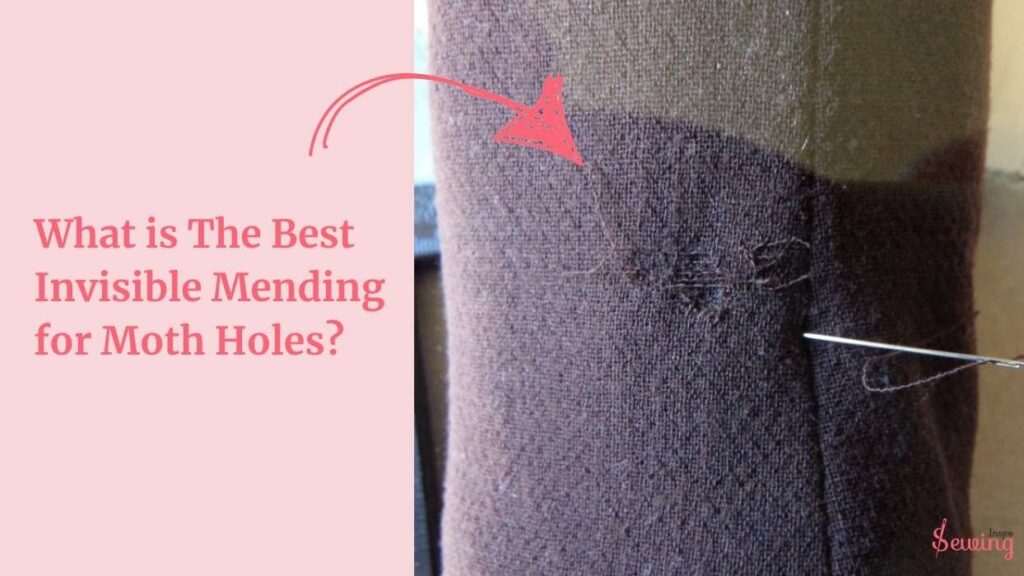
That’s what a moth did to my favorite jumper. Seeing the tiny holes, I almost cry and shout What is the best invisible mending for moth holes? 😑
Seeing my frustration, my grandma laughed and said, ‘Why are you getting so hyper? You can just darning moth holes & it will be gone like it never. You just gotta do it right with all kind of darning stitch.’ I jumped from happiness, took my clothes to her, and said, ‘Fix it right now 🥺 with woven fabric.’’
What Do Moth Holes Look Like?
Before fixing it, you need to know how it looks. Moth holes are usually small, irregularly shaped holes in the fabric. It is often found in wool, cashmere, or other natural fibers.
Moth holes in clothes can be tiny pinpricks or larger, frayed gaps where moth larvae have chewed through the threads. Some people use a diagonal darning stitch to fill up the gap.
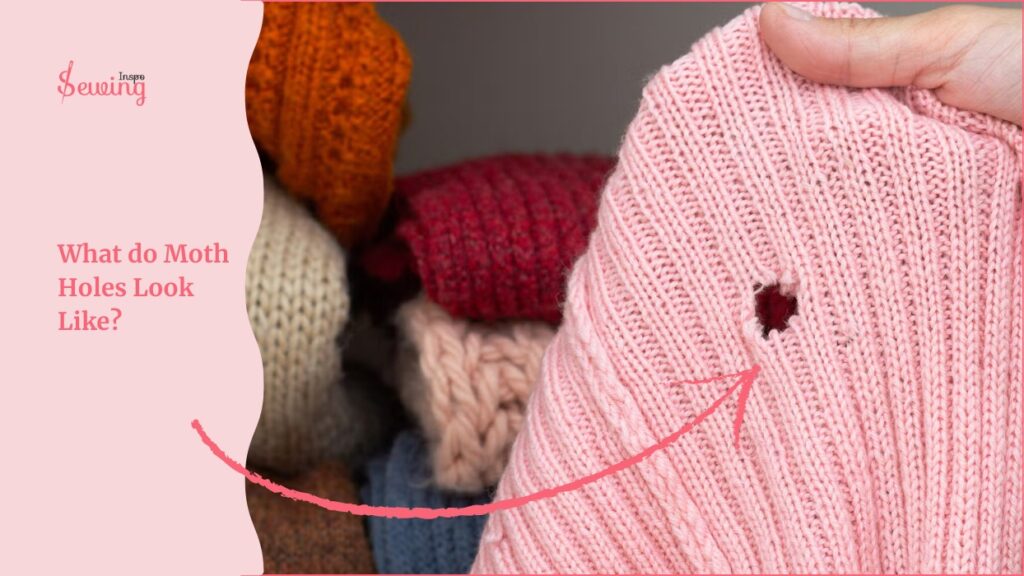
Can Moth Damage Be Repaired With Invisible Mending Moth Holes?
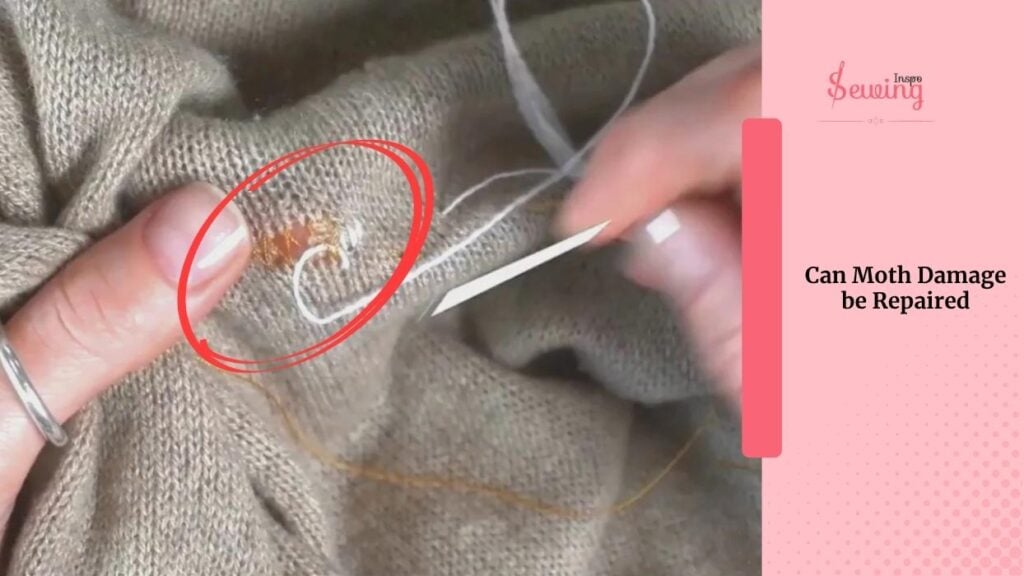
Yes, moth damage can be repaired with darning. If you do the darning stitch on the moth holes in clothes the right way, then the holes will disappear as if it was never there.
How To Fix Moth Holes In Clothes With Darning? Let’s Create Invisible Mending Moth Holes
Grandma similes and said ok let’s go, make an invisible mending moth holes
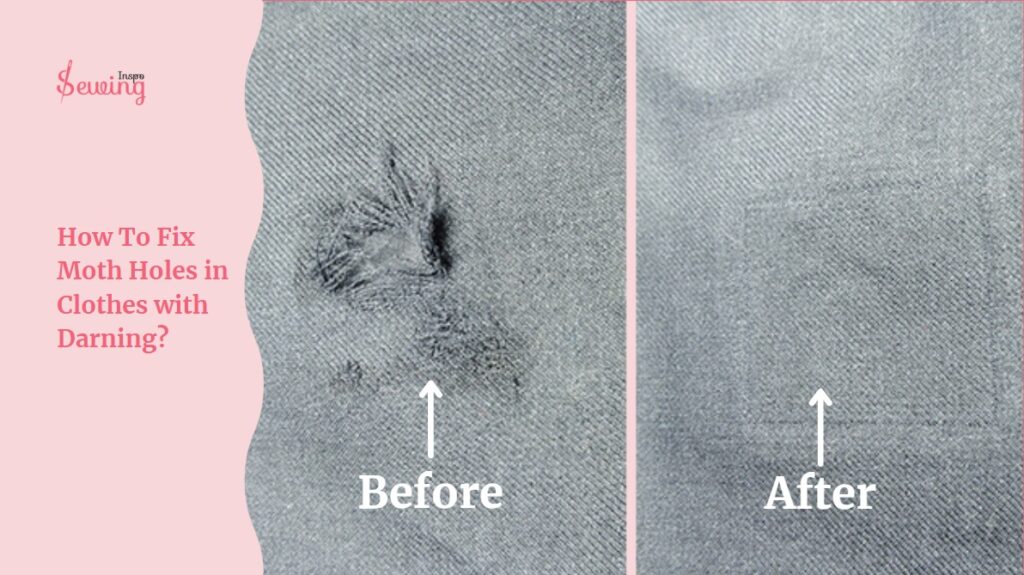
First, you’ll need a thread. It doesn’t have to match perfectly, but I’m using bright yellow for this demonstration so you can see what I’m doing. It just needs to cover moth damage. You can use the mending technique too. But I’m going for a darn one.
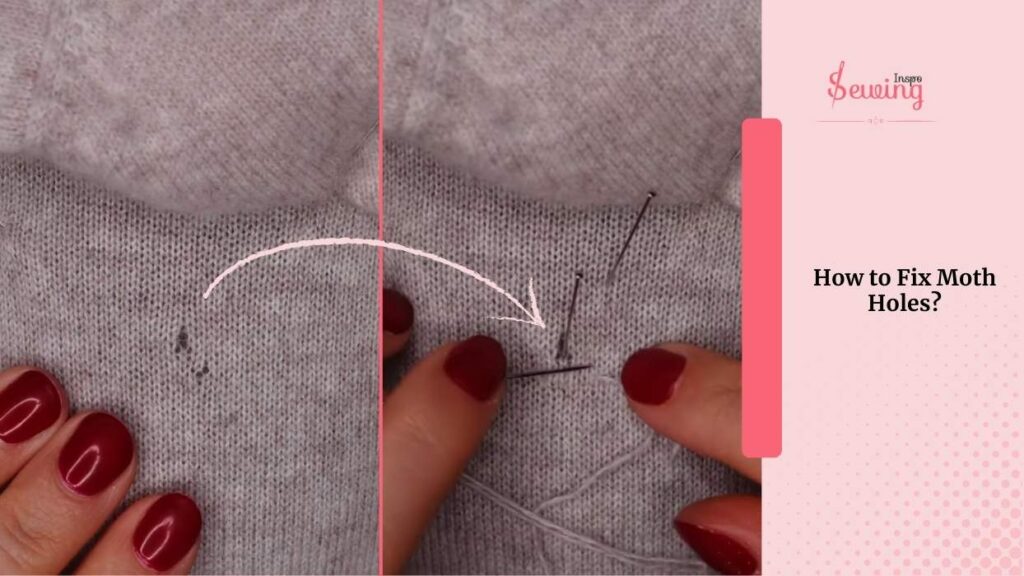
Normally, I’d match the color more closely. I’m not doing honeycomb, so I used no bright color. Then, thread my Darning needle. Now let’s start with how to fix invisible mending moth holes. Demonstrate you like scotch darning.
Turn it inside out. This is a lambswool jumper, so it’s a bit thicker. But the method is the same for most knits. Look closely at the back can you see how the knit has vertical chains and horizontal loops? That’s where I’ll do moth hole repair. invisible mending moth holes.
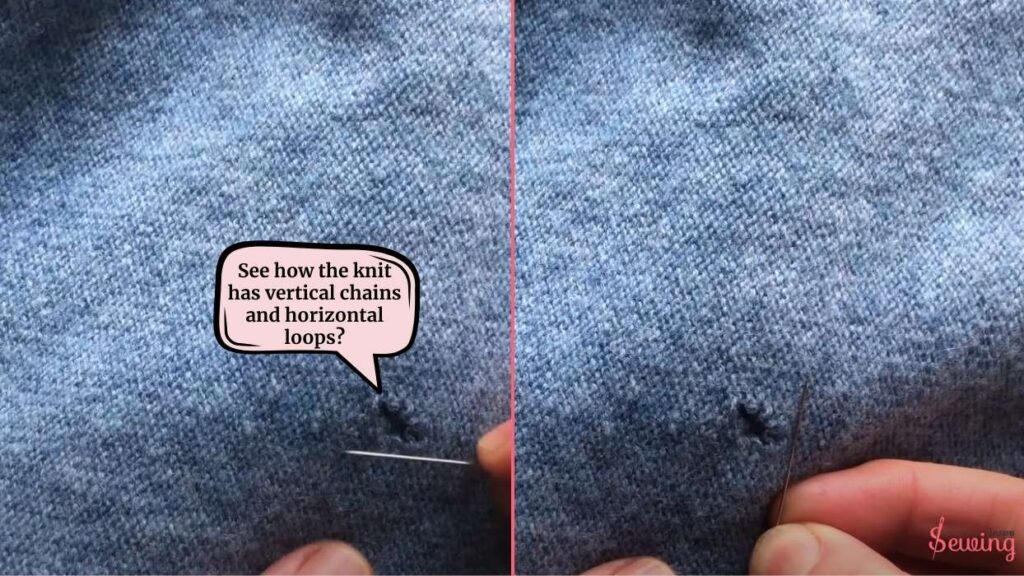
That’s important because I’ll use that to guide our stitches, just like the Drawing 3 line guide used for double darn. Then, I put the cloth under the darn egg.
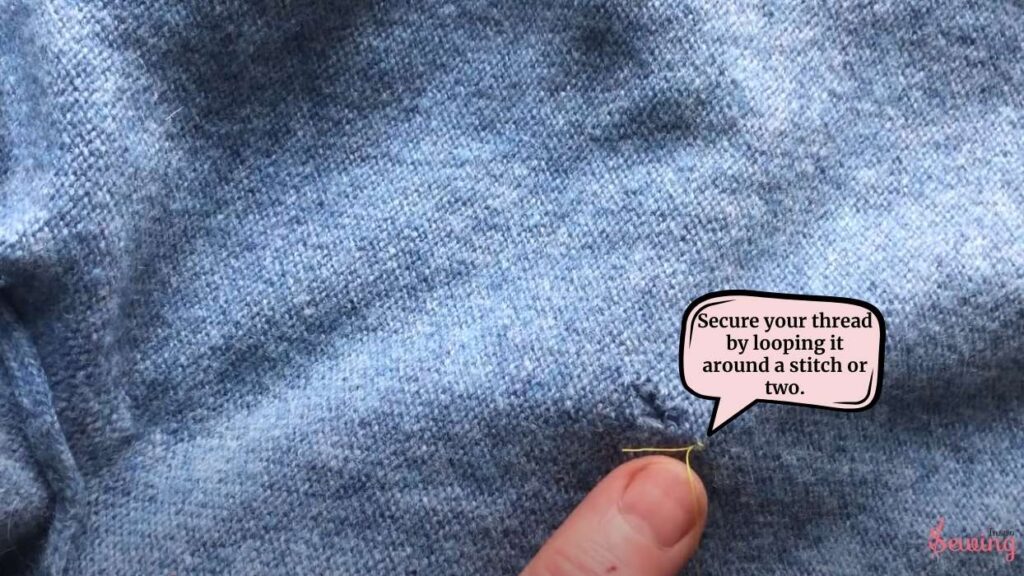
Start a little away from the hole. Secure your thread by looping it around a stitch or two. Don’t go to the front; I want to keep this as invisible as possible. But I’ll use the darning technique.
Now, we’ll work vertically. Gently catch the broken loops, moving upward over the hole. You’re almost weaving the thread back into the jumper. Don’t pull it too tight. Just enough to bring the loops together. You are not doing darn embroidery, so no need to be fancy. But if you wanna be fancy you try twill darning.
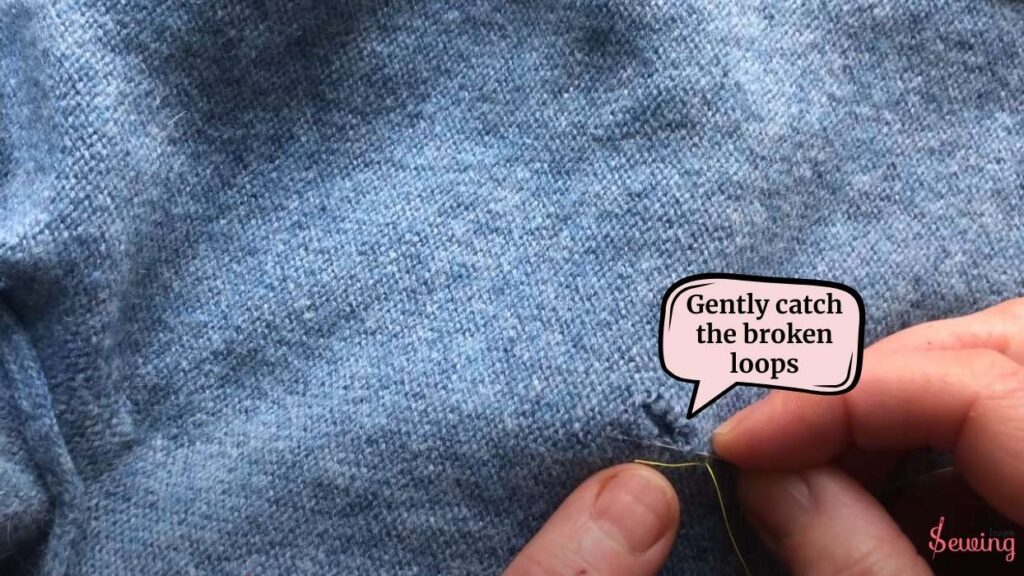
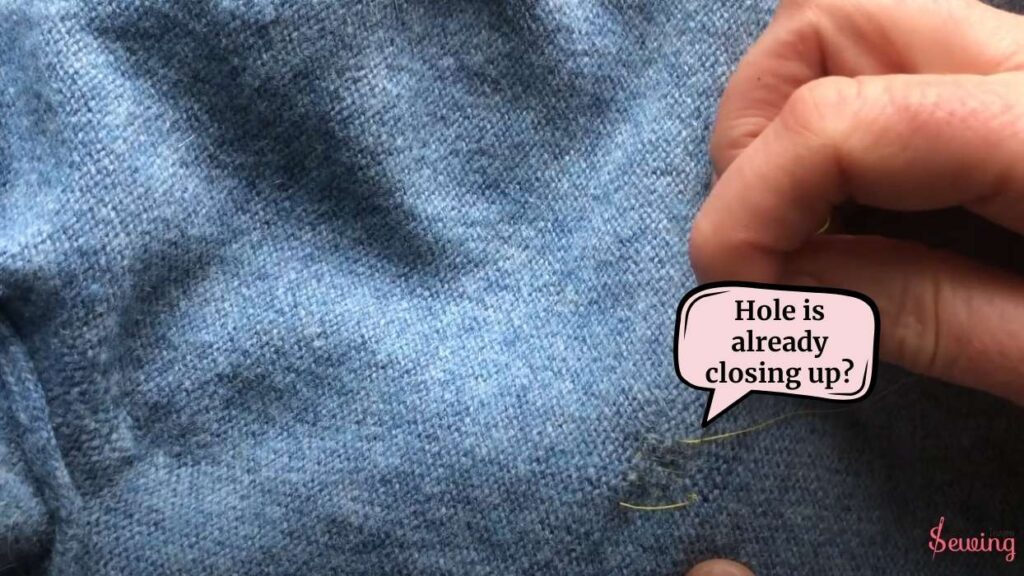
When you reach the top, come back down the next loop. Can you see how the hole is already closing up? It’s like magic, isn’t it? That’s how darning linen also works.
Once the vertical loops are secure, we’ll work horizontally. Bring the thread across the hole, gently easing it together. Wool loves to be coaxed, not forced. Keep it natural, like woven darning.
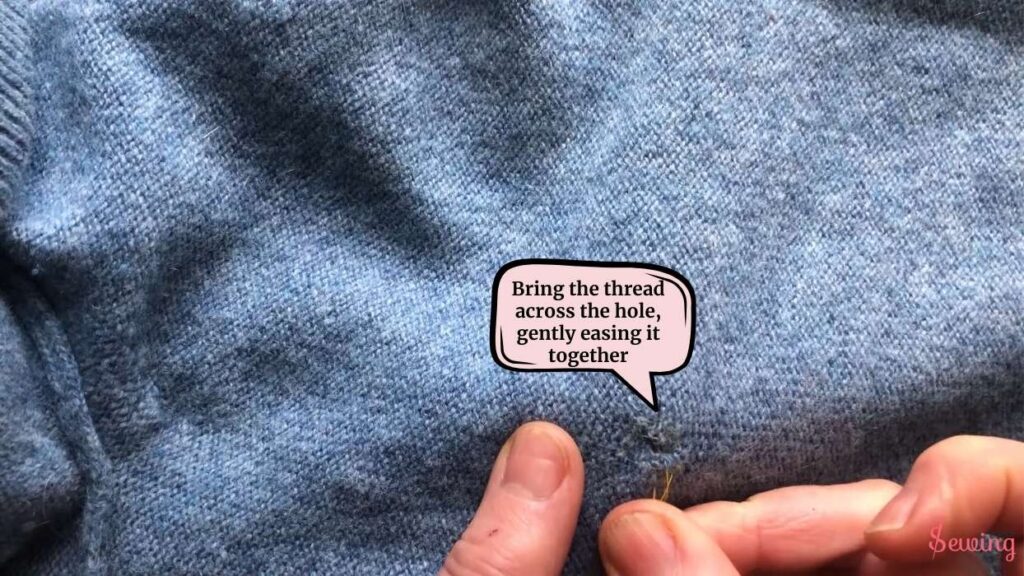
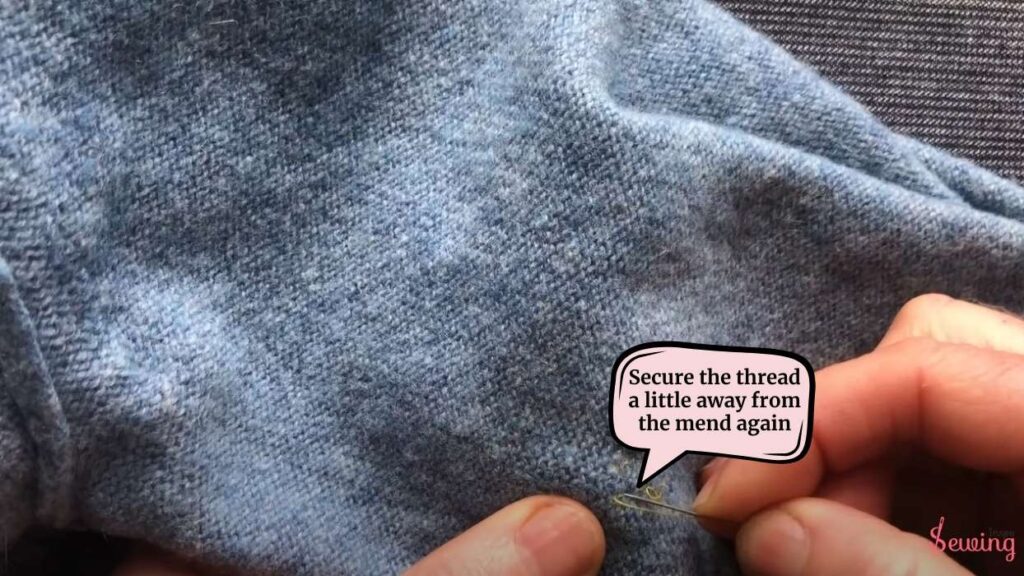
When you’ve covered the hole, secure the thread a little away from the mend again. I like to tuck the thread through the back of the stitches before trimming it. It will work like an invisible darning stitch.
No dangly ends here! Pull it slightly before you cut, and it’ll disappear beautifully. That’s the part I love about darn clothes.
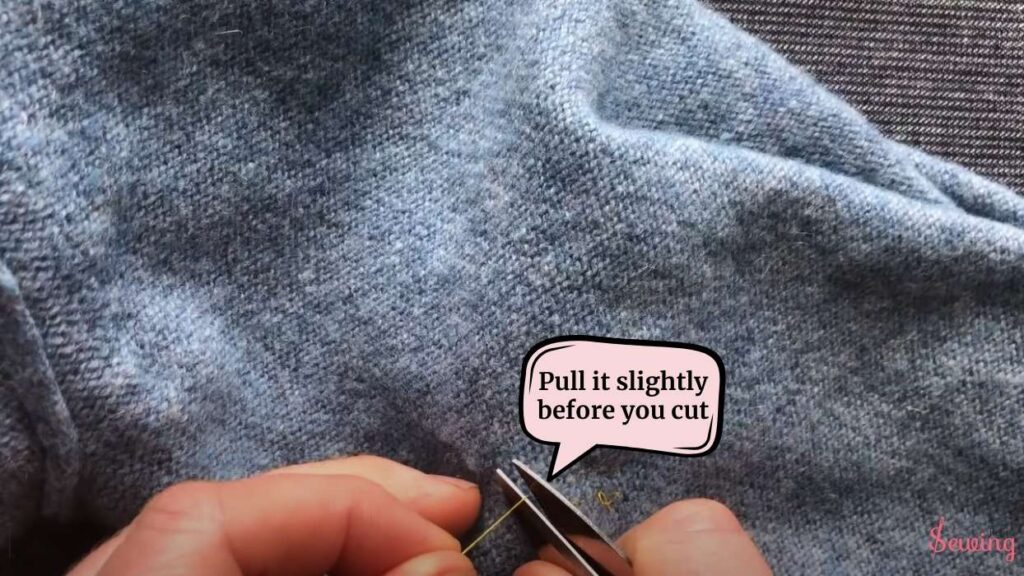
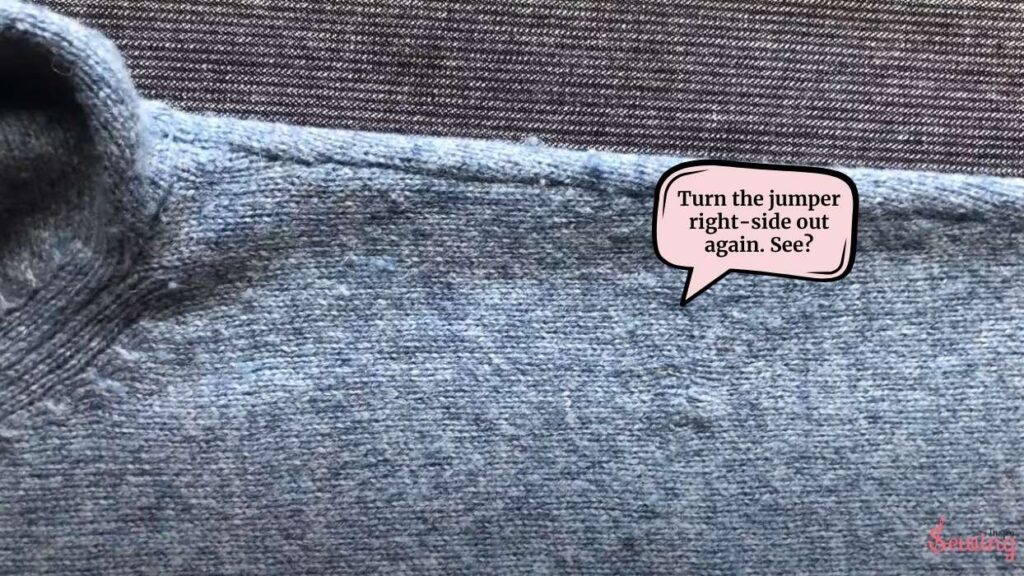
Turn the jumper right-side out again. See? Even with yellow thread, it’s hard to spot the mend. If you weren’t looking closely, you’d never know it was there!
For the finishing touch, gently steam it with the iron, not touching the wool, mind you! This helps unite the fibers, making the mend even more seamless.
And there you have it, my dear. No one will notice a thing, and your jumper is as good as new. 😍 You can never tell there is a moth hole. You can also use this darn technique to fix even big clothes moths hole. You just gotta need to stitch it right.
So yeah, that’s how you can do darning moth holes sweaters. This way, you never know the moth and never create a hole. Well, darning and sewing both work here, but I choose to go with darning because it’s easy and fast.
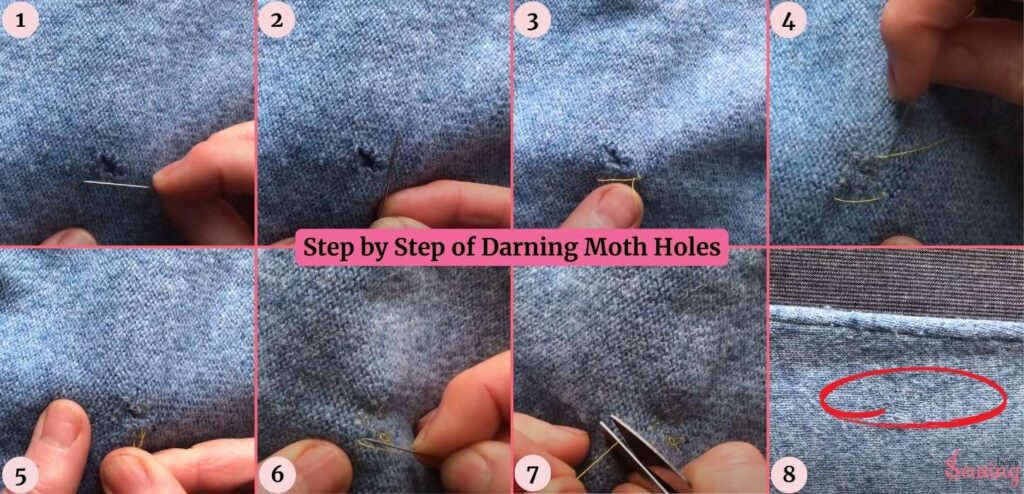
That’s the basic way to fix the moth holes, but does it work with fabric? Umm, maybe and maybe not. Let’s try it out and see.
How To Fix Moth Holes In Wool?
Wool is a tricky fabric to work with. But still, the work can be done. Fixing moth holes in wool is easier than you think! Here’s a simple way to do it:
- Gently brush away any loose fibres or debris around the hole.
- Find wool yarn or thread close to your garment’s color.
- Thread the yarn and carefully weave it back and forth across the hole, mimicking the wool’s natural weave.
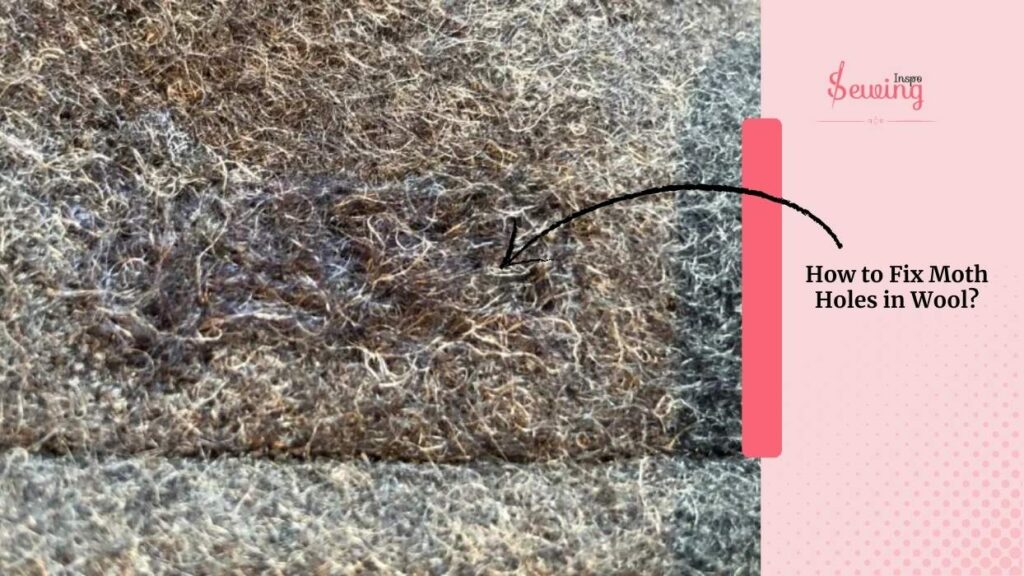
- Stitch beyond the hole to secure the fabric and prevent it from getting bigger.
- Tie off the yarn inside the garment and trim any excess.
If the hole is big, you can patch it with a small wool fabric piece carefully sewn in.
How To Fix Moth Holes In Sweaters?
Moth holes in sweaters annoy me the most because they’re easy to get in. To spot the damage, Find all the holes and gently clean loose fibers around them.
Then,
Pick yarn or thread that’s as close as possible to your sweater’s colour and fibre type.
Now decide you need Darn or patch:
- Use a darning needle to weave yarn back and forth for small holes, mimicking the knit.
- For larger holes, cut a small patch from similar fabric and sew it neatly over the hole.
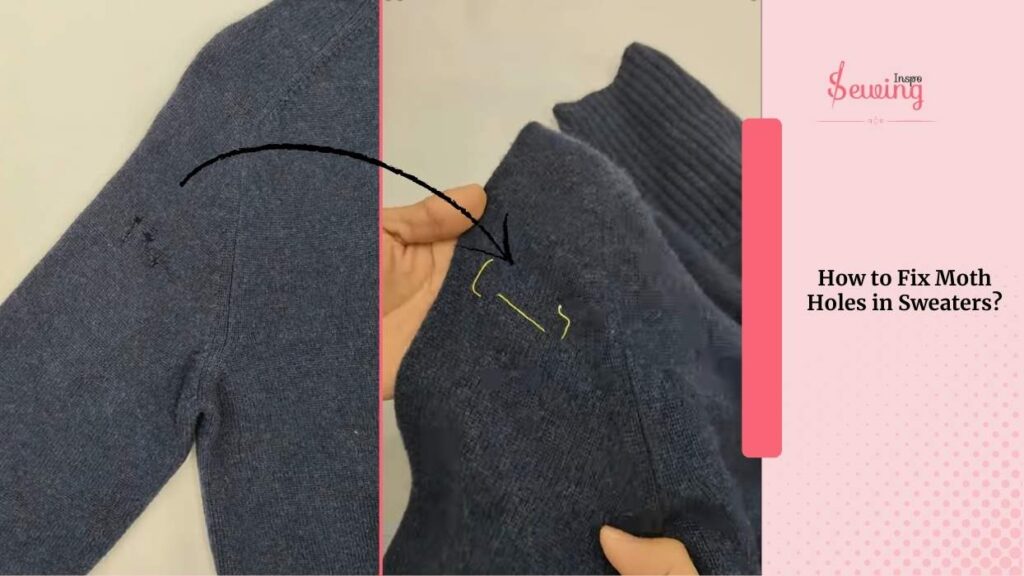
Always stitch a little beyond the hole to stop it from getting bigger. Then tie off yarn ends inside the sweater and trim carefully for a clean finish. And that’s it! Your holes are fixed.
How To Fix Moth Holes In T Shirts?
Fixing moth holes in T-shirts is pretty simple! First, trim any loose threads around the hole. For small holes, use a needle and thread that matches the fabric color and sew tiny stitches close together to close the gap.
For bigger holes,
You can patch the inside with a thin piece of similar fabric and sew around it to secure it. To store your T-shirts away from moths, use natural repellents like lavender or cedar.
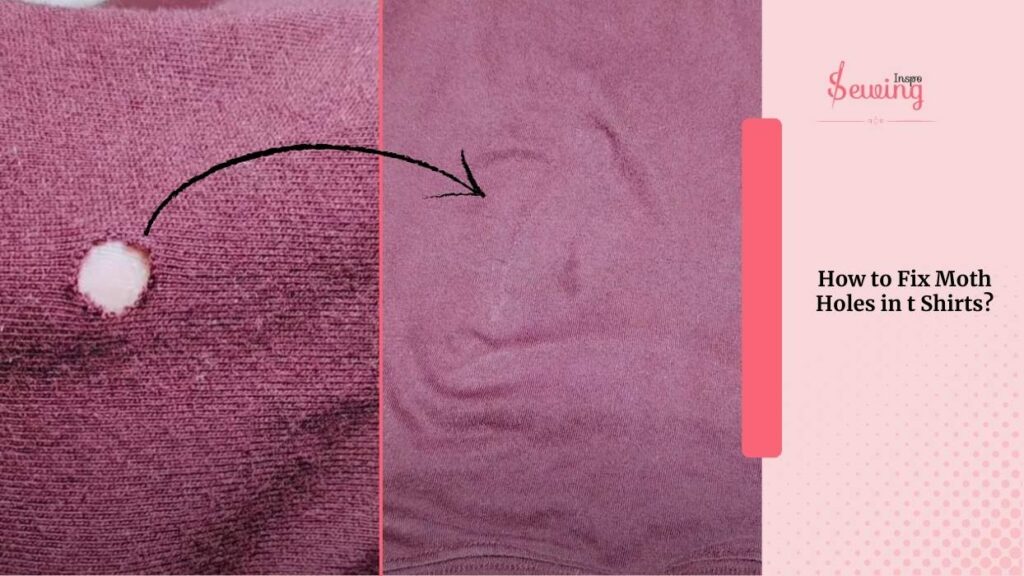
How To Fix Moth Holes In Suit?
Fixing moth holes in a suit needs a bit of care since suits are usually made from wool or wool blends. Here’s how you can tackle it:
- if the hole is tiny, you might be able to patch or darn it yourself; for bigger holes, a professional tailor is best.
- Clean the area gently to remove loose fibers without making the hole worse.
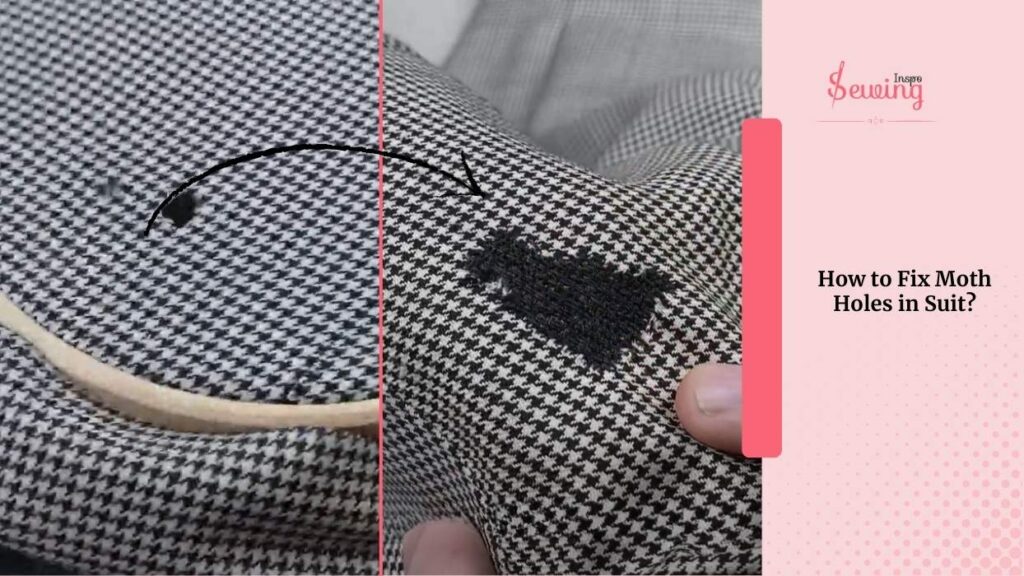
- For small holes, use matching thread and a fine needle to carefully darn the hole—stitch back and forth to weave the fabric back together.
If you want your suit looking sharp, sometimes the pros are worth the visit!




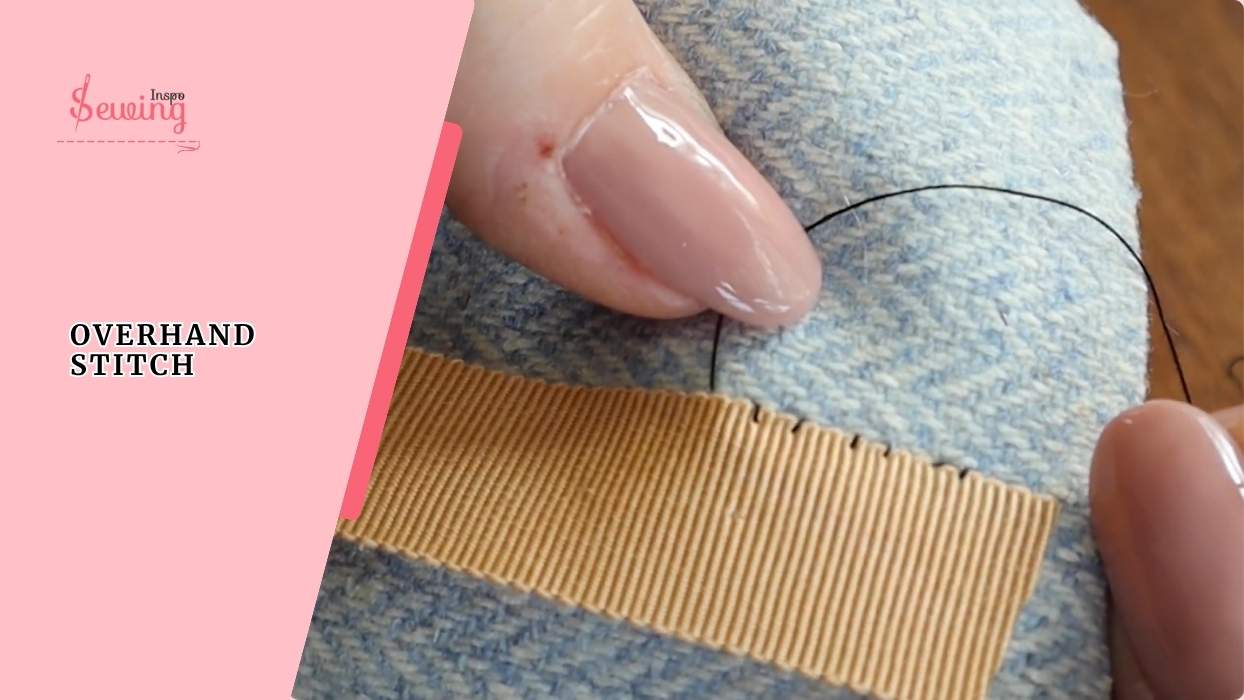
Leave a Reply